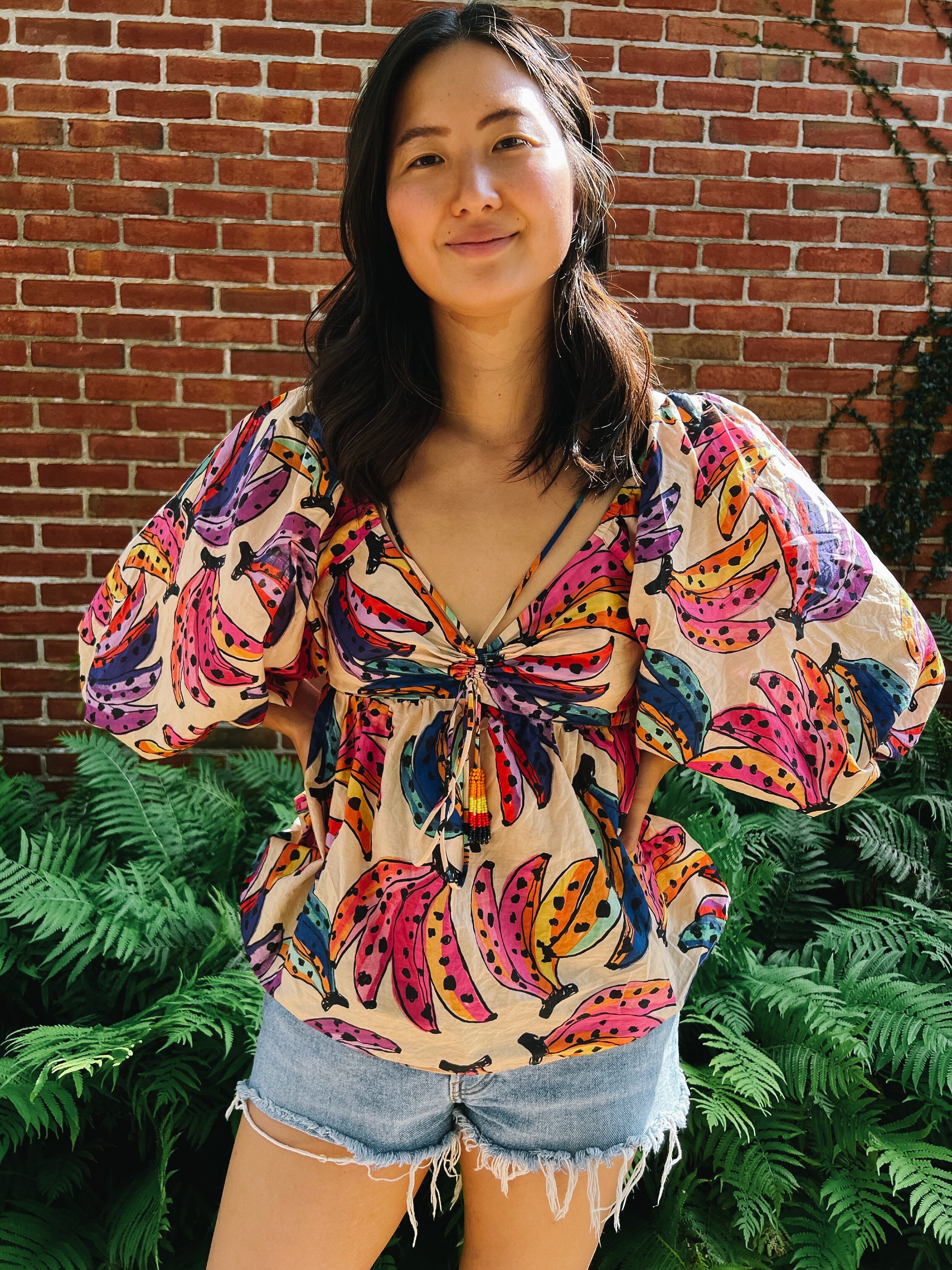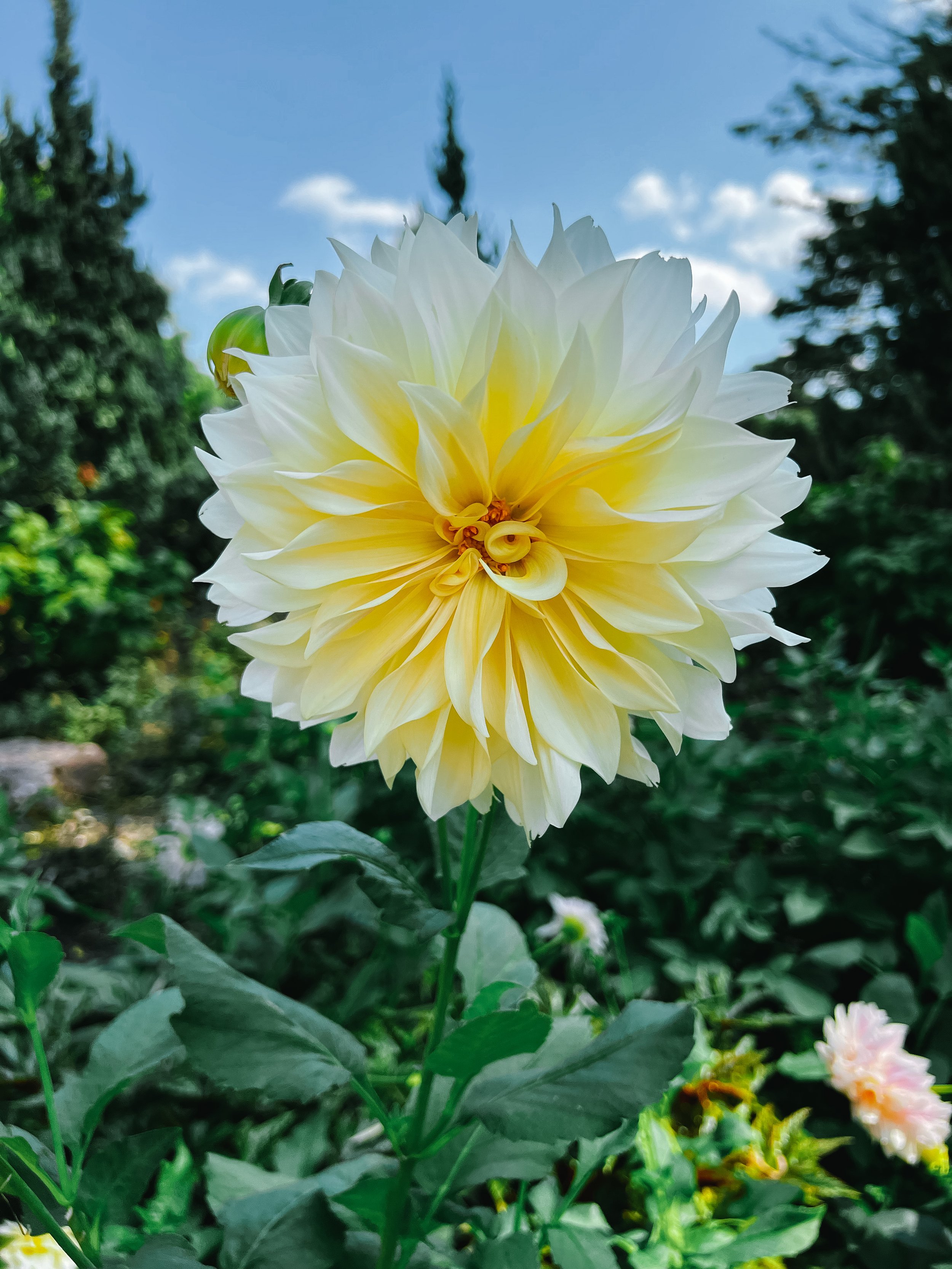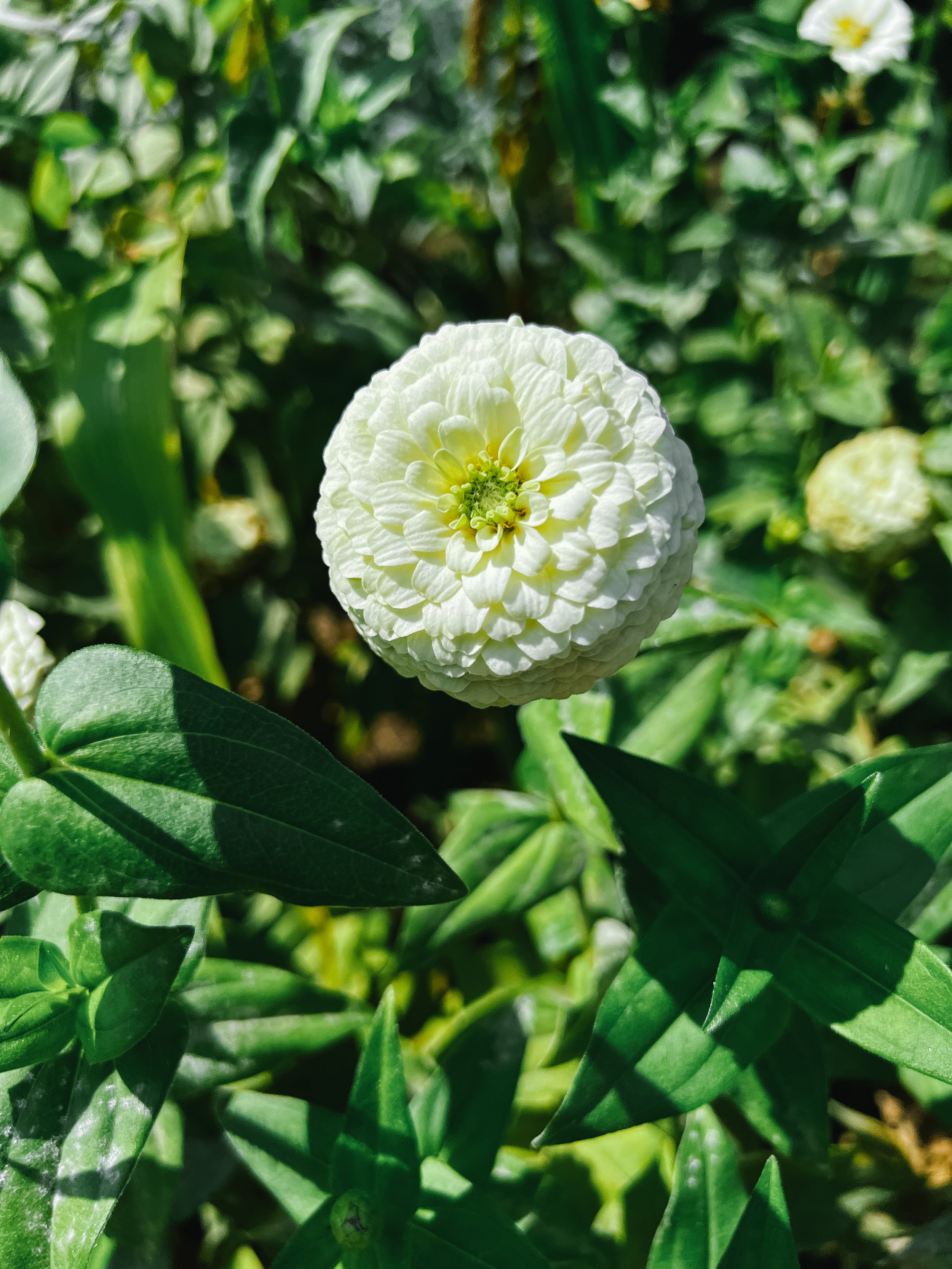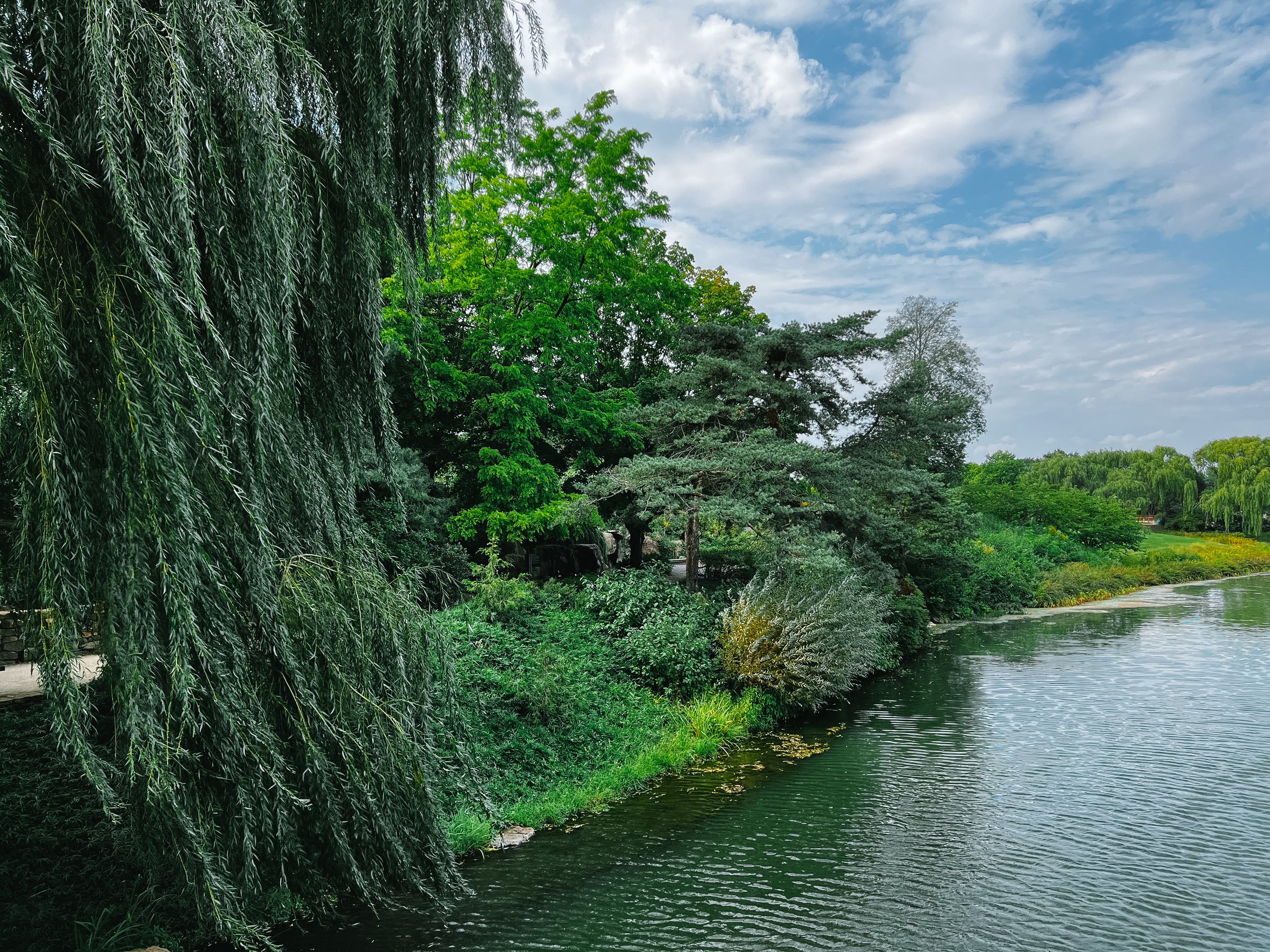Every outing with Bub that doesn’t involve a panic attack I consider a win. Today was another win for me. We spent the afternoon at the Chicago Botanic Gardens, which were absolutely beautiful. I’m sure they use pesticides and herbicides to maintain the gardens. A year ago, I would have inquired before visiting to confirm if they used harmful chemicals. And if they did, they were blacklisted. Today, I assumed they did and took my child there anyway. Who am I anymore?
Of course, pesticides and herbicides still anger and trigger me. I was still on my guard while walking around the gardens, trying to do my grounding exercises when Bub walked on the grass, holding my breath when he stopped to smell the flowers, panicking any time I saw a little flag in the ground. Walking through the maze of parking lots to get to the main entrance made me nervous, worried a car would drive by that would fill our air with exhaust.
I did my best to remind myself that some exposure is good for him and that I would remove him if I felt like he was in danger. I focused on the beautiful weather and being as present as possible. What I experienced in return was priceless. Bub loved the model railroad so much that we walked through it twice. He did a good job listening to me when I told him not to touch the gardening tools on display but tried to snap off a little pumpkin from the vegetable garden. While he liked smelling the concord grapes ripening over the arbor we walked under, he mostly liked chucking the grapes that had fallen. He was more interested in throwing rocks into the fountains than the gorgeous blooms around us. He is a ball of energy these days and it was glorious to let him run around in the sunshine. It’s a gift to be able to spend one of the last warm days of the year outside. We stayed longer than expected, a full three hours, and nearly avoided the only tragedy of the day: running out of snacks.
I’m learning that it is possible to feel a sense of peace in letting go of over-planning and over-analyzing. Perhaps every now and then, stopping to smell the roses is more important than worrying what might be on them.







